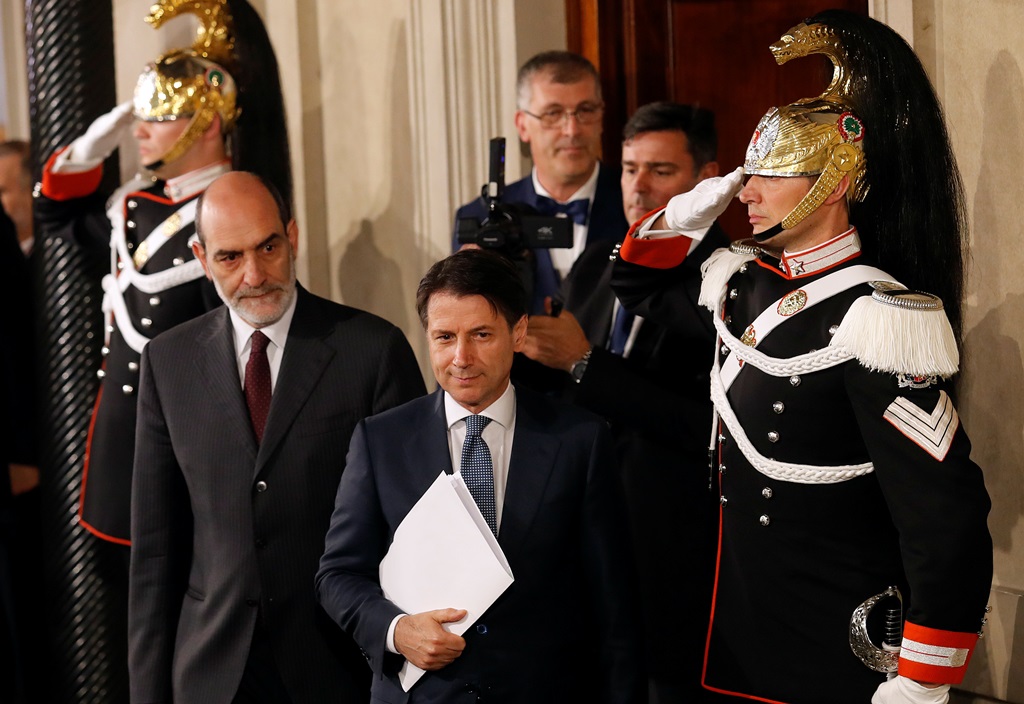
After more than two months of difficult negotiations, several Italian parties have managed to reach agreement on the formation of a government. The cabinet will be created by the anti-establishment Five-Star Movement (M5S) and right-wing League (formerly Northern League). Their programme may cause conflicts between Italy and its European partners.
How did the coalition talks go?
In the elections of 4 March, none of the parties gained a clear majority. In general, the centre-right bloc composed of League, Forza Italia, and Brothers of Italy received the most support (about 37%). But, anti-establishment M5S was the strongest individual political party (32%). The Democratic Party, which has ruled so far, suffered heavy losses, winning only 19% of votes. Since the election, numerous unsuccessful attempts to form a government in various configurations have been made. To overcome the impasse, President Sergio Mattarella set the parties an ultimatum, sort it out or he will either set up a temporary “neutral” government or announce new elections. This mobilised the leaders of the strongest groups to take another—this time successful—attempt to create a cabinet.
Which parties will be part of the government?
The government will be formed of two parties—M5S, led by Luigi Di Maio, and the right-wing, anti-immigrant League, led by Matteo Salvini. The other centre-right bloc groups will not be part of the cabinet. The main reason is the mutual reluctance of the leaders of Forza Italia and M5S to join efforts, which effectively blocked talks on establishing a government after the elections. Also, former Prime Minister Silvio Berlusconi dropped his opposition to a government of M5S and League, indicating, however, that Forza Italia will abstain during the confidence procedure in parliament. The Democratic Party has distanced itself from the government. In recent weeks, its leaders rejected the possibility of entering into a coalition with M5S, announcing the party’s transition to the opposition.
Who will be the next prime minister?
Casting this position aroused the greatest controversy. Both M5S leader Di Maio and League’s Salvini expressed interest in the premiership. Salvini is more popular than both the current Prime Minister Paolo Gentiloni and Di Maio; however, the candidate was chosen from outside the political forefront. Instead, they turned to a 54-year-old law professor at the University of Florence, Giuseppe Conte, who was nominated to be PM. Conte has previously worked with Di Maio; during the election campaign before the March elections, he was presented by M5S as one of the party’s candidates to the government. He is known as a critic of Italy’s labyrinthine bureaucracy, but he was not present during the coalition talks and therefore has had no influence on the shape and programme of his cabinet.
Will the government last an entire term?
The difficulty in forming the coalition indicates an uncertain future for the government of M5S and League. Large differences in their respective programmes, especially in economic matters, as well as the personal political ambitions of the coalition partners’ leaders are the key challenges to the stability of the cabinet. Among the citizenry, opinions about the coalition are divided: In the latest La Repubblica survey, 60% of respondents supported the creation of the M5S-League cabinet and 36% were against; on the other hand, in the EMG Poll, only 38% of Italians positively assessed the M5S-League coalition, while 47% expressed negative opinions about it. However, new elections do not seem to be an alternative today: In the Tecné Poll of 8 May, almost 80% of Italians declared they would vote for the same party as in March and only 3% reported they would change their vote.
What will be the new government’s European policy?
In the M5S and League coalition agreement, there is no mention of the organisation of a referendum on Italy’s membership of the eurozone, postulated in the past by both parties. The changes announced by the government in domestic financial, social, and fiscal policy may, however, threaten the stability of the zone. The coalition’s plans include a discussion on the revision of Union treaties to limit the EU’s competences and “democratise” its institutions. The government plans more restrictive policy on migration, focusing on migrant returns. It will also push for the creation of a mandatory and automatic distribution system for asylum-seekers in EU countries. The government intends to warm relations with Russia, demanding the abolition of EU sanctions on it and recognising Russia as a strategic partner in resolving crises in the EU neighbourhood.



